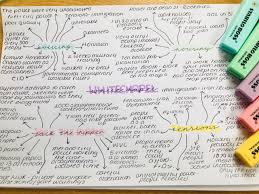statistical tests
Cards (16)
- What are parametric stats?
- More powerful than non-parametric tests
- Use raw data in their calculations and take into account all the information available
- Make calcs using mean and standard deviation
- why are parametric stats stronger than non-parametric stats?
- Non parametric use only ranked data- lose some of the detail
- Greater power efficiency
- Require less data in order for us to reject null hypothesis
- Can detect significance where non parametric tests don’t
- what 3 criteria must the data satisfy in order to use a parametric test?
- data must be interval or ratio measurement
- scores must be drawn from a normally distributed population
- variances must not be too different- the square of the standard deviation in each sample must be more or less the same/similar
- what does < > mean in terms of probability?
- < = less than (p<0.5)
- > = greater than (p>0.8)
- what does lenient and stringent levels mean in terms of significance?
- lenient- easy to achieve, allowing a greater probability that results are not due to chance
- stringent- hard to achieve, not allowing a great probability that results are not due to chance
- what is a type I error?
- psychologist/person testing for difference claims that a difference between data sets is real when there's in fact no real difference/significance because the level of significance is too high/lenient
- so researcher rejects null hypothesis when it should be accepted
- false positive
- what is a type II error?
- a real/significant difference is overlooked because the level of significance is too low/stringent and harder to achieve
- so you accept a null hypothesis when it should be rejected
- false negative
- what 4 things must be considered when deciding what statistical test to carry out?
- is it a test of difference or an association?
- what research design should be used? (matched paris, rep measures)
- is it nominal/ordinal/interval?
- If it's interval does it fit the requirements for a parametric test?
- in what tests does the calculated value have to be less than/equal to the critical one to detect significance?
- Mann-Whitney U
- Wilcoxon
- sign test
- in what tests does the calculated value have to be greater than/equal to the critical one to detect significance?
- related T test
- unrelated T test
- Pearson's R
- Chi squared
- Spearman's Rho
- what things must be checked when looking for a critical value?
- the hypothesis is in the right direction
- you have the correct degrees of freedom (number of values for each data set)
- find the right level of significance (0.05 or 5%)
- determine which has to be greater for significance- calculated/critical. IGNORE ANY SIGNS (+ve/-ve numbers) WHEN IDENTIFYING WHICH OUT OF THE CALCULATED/CRITICAL VALUE IS LESS/GREATER
- when are bar charts used and when are histograms used?BAR CHARTS-
- when the data is discontinuous
- when the data is represented as distinct categories/2 different conditions
- has no true zero
- space left in-between bars to indicate lack of continuity
HISTOGRAMS-- when the data is continuous
- when the data is of numerical value/collected quantitively
- there is a true zero
- bars are proportional to frequencies represented
- no space between bars to indicate continuity
- what is meant by continuous and discontinuous data?
- continuous- numerical value, quantitative, has a particular order
- discontinuous- data is collected using categories/2 distinct conditions, has no particular order
- recite the statement used for declaring or refusing significancethe results are/are not significant, as the critical value of... (number stated) is less than the calculated value of (number stated) at the 0.05/5% level (df=....) therefore we can accept/reject the null hypothesis and conclude there's less/more than a 5% probability that the results are due to chance
- why do we use the 5% level in psychology?strikes a balance between the risk of making a type one or a type two error
- when should a non-directional hypothesis be used?
- when there's no previous research
- when previous research is contradictory
